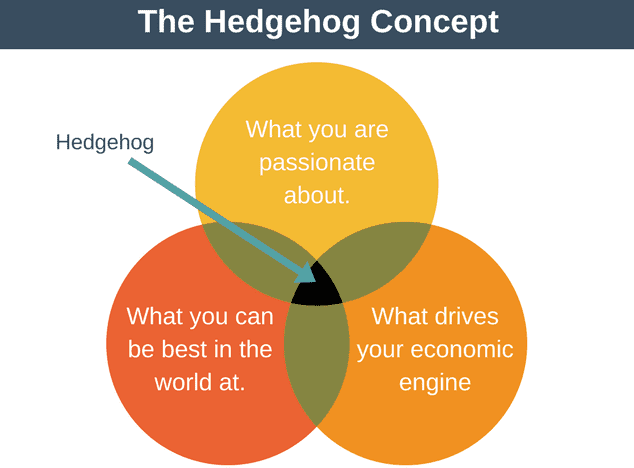Tech-based talent development is here to stay. The business world is moving away from a structured, process-based approach towards a more agile, learner-driven approach. The adoption of this simpler, scalable model has organically shot up because of the different business realities of 2020, and a need to thrive despite the challenges.
It is now clearer than ever that with a wider spread of organisational talent across various local and global addresses, and with people working remotely, employees are now in control of demanding, determining and developing their own experiences at work.
Are you ready to travel to the future of talent development? If you are, it means you are also ready to embrace these rules as you go along.
Rule #1: The ‘Sweet-Spot’ Strategy
It is time to move past the theoretical goal-setting process and adopt a shared one where both employee and manager play to the employee’s strengths. In short, find every employee’s sweet spot (hedgehog). The hedgehog concept in Jim Collin’s Good to Great gives depth to this concept.
If you are wondering why we need to focus on that one big thing each person does best, it is mostly because the world of work has moved from being physically dependent on colleagues to virtual collaboration. However, virtual collaboration is still determined by a high level of individual independence, integrity, and will-power.
Employees do not and will not have as much access to physical support and must, therefore, be capable of functioning with less supervision. The best way to do this is to find what they do exceptionally well, are fully passionate about, and will drive the economic engine of the business. That is the sweet spot and employees need to be equipped to own their tasks. As they go along, offer support on all the other areas, and watch them bloom naturally. Stay in the past, and your talent could easily go boom!
Rule #2: Quit Expecting Collaboration, Teach it!
Now that everyone is playing to their strengths, we need to bring these strengths together. To do this, businesses must develop and design collaborative learning experiences that build capabilities, drive engagement, and achieve business goals.
Collaboration has not been as successful as it should be, because most leaders have projected it as a value to imbibe and not a skill to teach. Many projects have tried to influence employees to work together by heavy-handed means; however, they have failed to teach or drive robust collaboration truly.
Businesses need a behavioural change approach to collaboration. Successful collaboration is driven by several psychological factors including – openness, trust, joint accountability, respect for each other, and so on. As simple as these attitudes are, they are very rare, and most people create an impression but have hidden intentions.
As daunting as this may sound, some have been able to crack the code to successful collaboration. You can also achieve this by doing the following:
- Design experiences that teach collaboration; this is the heart of experiential learning.
- Ask expansive questions that play on the pre-identified strengths of everyone and accelerate skill development.
- Teach empathy and let everyone get comfortable with collaborative feedback.
- Reward collaboration and not individualism in collaborative workgroups.
Rule #3: Train your employees to fly!
Before you sign up your 100+ employees for flight school or grab them a pair of wings from the props store, hold on. This flight is more about adaptability and agility.
Current employee skills are quickly becoming obsolete, and as new skills pop up, the need for highly specialised trainings are less relevant. Learning experiences, even when they focus on employee core strengths, should be more focused on behavioural strengths and collaborative skills. In simple words, soft skills are now core skills.
Employees need to learn to adapt as the business world evolves because the drivers of change are not necessarily as predictable. By introducing learning programs that teach skills like telecommuting, self-awareness, communication, and resilience, short term business recovery is more guaranteed for our current pandemic phase, and long-term sustainability is more likely for a future of more changes.
Many employees battle with cognitive dissonance – internal chaos caused by continuous change or instability – and that is the primary reason businesses struggle with growth in unprecedented times. Equipping them with skills to adapt, battle change and fly with the times is more of a fool-proof strategy for any business than waiting for change to happen first.
These three rules are not the only ways to go about talent development. Rather, they form part of a broader strategy to create a ready workforce for the future of work which is the present day and the farther future combined, because everyday something will change. In a nutshell, start with the ‘I’ that doesn’t exist in “team” because a chain is only as strong as its weakest link and this future needs every link to be strong because work is never going to be in just one place again. Next, take that ‘I’ and teach that strength to work as ‘We’. With all the power pellets you have boosted each employee with, you have a much stronger team. Finally, give your team a skill boost and help them fly high above the challenges of change and change management.
Written by:

Feranmi Owolabi-Okojie
Senior consultant

